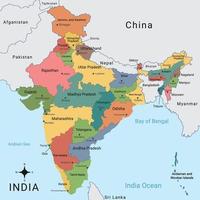
The Saraswati River Myth History and Significance
Saraswati River
The Saraswati River is one of the most revered and mythologized rivers in Indian history and culture. Mentioned extensively in ancient texts, including the Rigveda, this river holds profound spiritual, historical, and cultural significance. Though its physical existence as a prominent watercourse has been debated and largely discredited in modern times, its legacy as a symbol of purity, wisdom, and knowledge continues to resonate deeply in Hindu traditions.
Mythological and Vedic Significance
The Saraswati River finds a central place in the Rigveda, one of the oldest texts in the world. In the Vedic hymns, the Saraswati is not just a river but also a goddess. Revered as a goddess of wisdom, arts, and learning, Saraswati is often depicted as a serene and graceful figure holding a veena (a musical instrument), symbolizing her association with knowledge and creativity.
The Vedic texts describe the Saraswati as a mighty, life-sustaining river, which flowed from the snow-capped peaks of the Himalayas through the northern Indian plains, and eventually into the sea. The river was not only a source of life but also played a significant role in the spiritual and social life of the people who lived along its banks. It is said to have nurtured the Vedic civilization, offering sustenance and a means of communication for the early Aryan settlers in the region.
you can easily find maps of the ancient Saraswati River online or in books about ancient Indian geography or Vedic history.
To assist you in understanding the region associated with the Saraswati River, I can describe its general path based on ancient texts and modern archaeological research:

- Origin: The river is believed to have originated from the Himalayas, possibly from the Kailash range or other northern sources.
- Flow: It is described as flowing through what is now the northern regions of India, particularly the states of Haryana, Rajasthan, and Gujarat.
- Confluence with other rivers: The Saraswati is said to have met the Indus River at some point before it eventually merged with the sea, possibly the Arabian Sea.
For detailed maps, I recommend searching for terms like “Saraswati River map” or “ancient river systems of the Indus Valley”, as these resources can provide you with accurate visual representations of the ancient river’s possible routes.
The Disappearance of the River
Over the centuries, the Saraswati River seems to have gradually disappeared from the Indian landscape, and by the end of the Harappan civilization (around 1900 BCE), it was no longer a prominent feature of the region’s geography. The cause of the river’s disappearance is still debated, with theories suggesting climate change, tectonic shifts, and the shifting course of the Indus River.
One theory posits that the Saraswati, like many ancient rivers, dried up due to a change in the monsoon patterns in the region, which altered the course of its tributaries. Another suggestion is that tectonic activity caused the river to be diverted or that the course was blocked due to the changing flow of the Indus River. Some research also suggests that the river may have split into smaller tributaries, which eventually became disconnected from the main watercourse.
In modern times, however, there have been reports and studies suggesting that the river, or at least its tributaries, might have once flowed through what are now desert regions in Rajasthan, Haryana, and Gujarat. Satellite imagery and geological surveys have identified ancient riverbeds, leading some scientists and historians to propose that the Saraswati River existed as a significant watercourse thousands of years ago, before it eventually disappeared.
Cultural and Religious Legacy
Even though the Saraswati River is no longer a physical entity, its cultural and religious significance persists. In Hinduism, the goddess Saraswati continues to be worshiped as the goddess of knowledge, music, and wisdom. She is one of the most important deities in the Hindu pantheon, and her veneration is especially prominent during the festival of Vasant Panchami, when devotees celebrate the pursuit of learning, education, and the arts.
The Saraswati River is also associated with spiritual purity and the attainment of wisdom. Pilgrimages to the sites along the supposed course of the river, particularly in regions like Haridwar and Kurukshetra, are considered auspicious and are a means for devotees to seek divine blessings. The idea of the Saraswati as a purifying force has also been linked to various rituals, including those for academic success and intellectual growth.
Several temples and sacred sites are dedicated to the Saraswati Goddess, reflecting the enduring cultural and religious ties to the river. One notable site is the town of Basar in Telangana, which is home to a famous Saraswati Temple. Similarly, the town of Pushkar, located in Rajasthan, is believed to be close to the once-flowing river, and the region continues to hold significance for many pilgrims.
Modern Exploration and Research
In recent decades, there has been a resurgence of interest in the Saraswati River, particularly with the advancement of satellite imaging, which has uncovered traces of ancient riverbeds. Archaeologists, historians, and scientists have been exploring the idea that the river once existed as a major watercourse and may have been part of an ancient drainage system that supported an advanced civilization. These explorations, though still inconclusive, have sparked a renewed focus on the river’s place in the history of the Indian subcontinent.
Various organizations and institutions have been involved in research to locate traces of the river, with some scientists suggesting that the Saraswati might not have disappeared entirely but may have been a seasonal or intermittent river, its flow affected by changing climatic conditions over time. Whether or not the river was as large and mighty as ancient texts suggest remains a matter of speculation.
Conclusion
The Saraswati River occupies a unique position in the annals of history, myth, and religion. While its physical existence as a major river has largely faded into the past, its spiritual and cultural significance remains undiminished. For Hindus, the river continues to be more than just a geographical entity; it is a symbol of enlightenment, learning, and purity.
Though the search for the river’s ancient path and the truth behind its disappearance continues, the mythic and religious legacy of the Saraswati River stands as a powerful reminder of India’s rich cultural and spiritual heritage. Even today, the river continues to inspire those who seek knowledge, wisdom, and spiritual growth.
Key Terms:
- ancient Indian geography ,
- ancient river ,
- archaeological research ,
- goddess Saraswati ,
- Gujarat ,
- Harappan civilization ,
- Haryana ,
- historical maps ,
- Indian mythology ,
- Indus Valley ,
- lost river ,
- pilgrimage sites ,
- Rajasthan ,
- Rigveda ,
- river disappearance ,
- river symbolism ,
- river systems ,
- riverbed traces ,
- sacred river ,
- Saraswati River ,
- Saraswati river course ,
- satellite imagery ,
- spiritual purity ,
- Vedic civilization ,
- Vedic river
Disclaimer: The information provided here has been compiled from various sources to the best of our knowledge. While every effort has been made to ensure the accuracy of the details, there may be occasional errors or omissions. If you find any discrepancies or incorrect information, kindly inform us so we can make the necessary corrections. Thank you for your understanding and cooperation.





